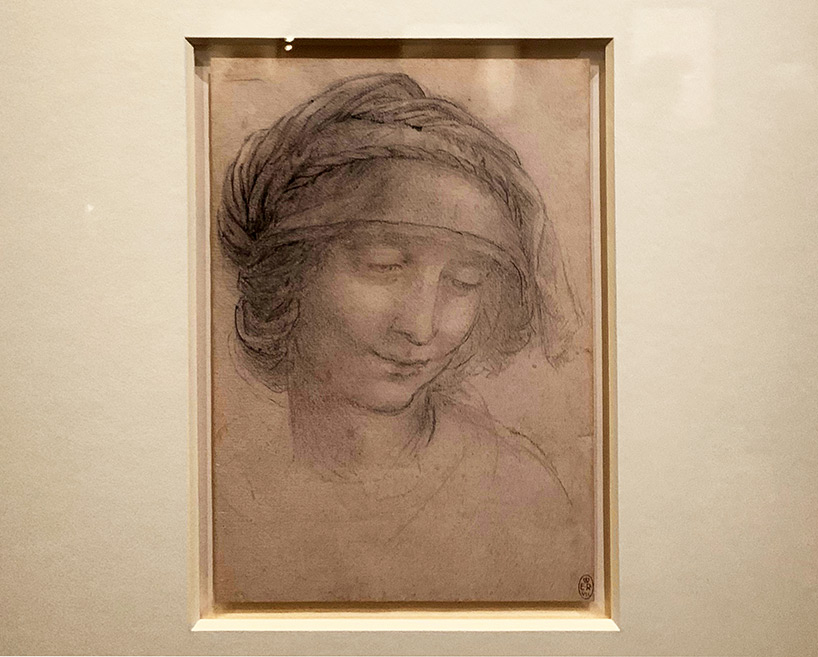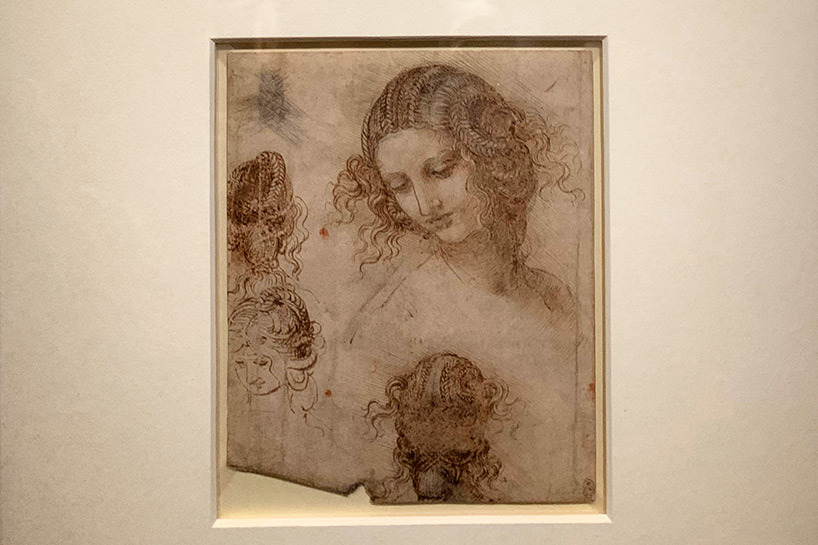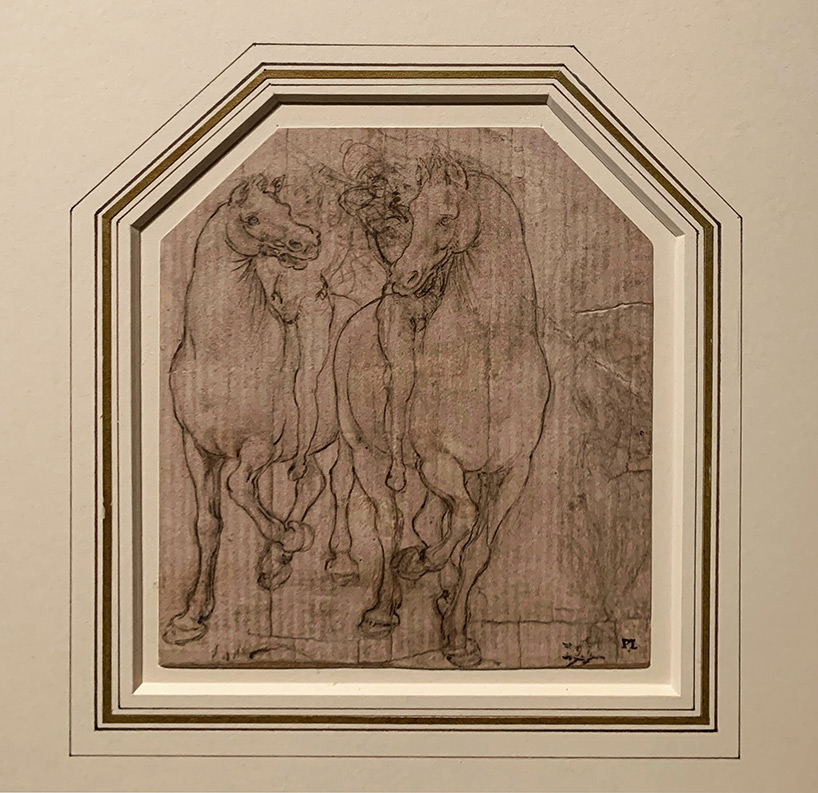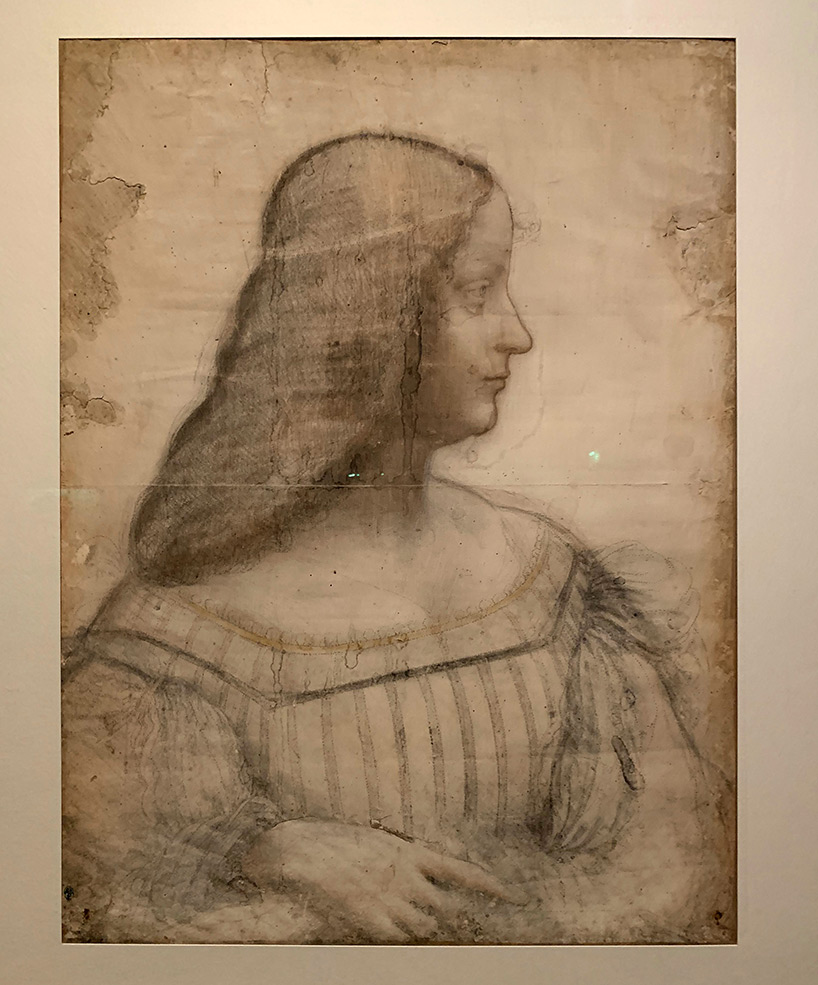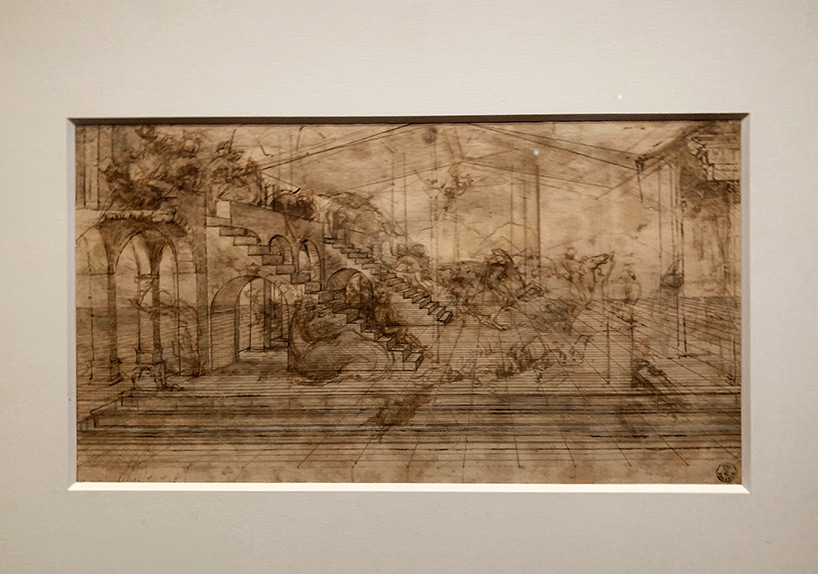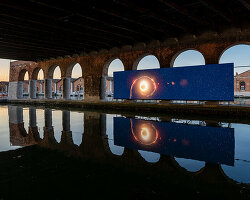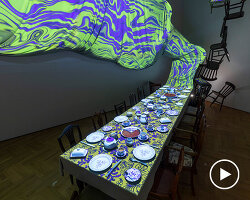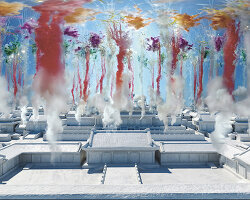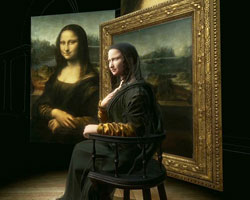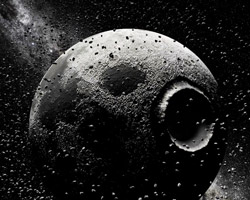in commemoration of the 500-year anniversary of leonardo da vinci’s death in france, the musée du louvre is hosting a major retrospective of the master painter’s vast oeuvre. born in the town of vinci, near florence, in april 1452 leonardo is undeniably one of the most prominent figures of the italian renaissance, and the ultimate icon of european painting. in around 1482, the artist moved to milan where he painted the virgin of the rocks, and while in the service of ludovico sforza — the duke of milan — leonardo realized the last supper, a work that made him one of the most famous artists of his, and all, time.
the exhibition at the louvre aims to show how leonardo placed utmost importance on painting, and how his study of the world — which he referred to as ‘the science of painting’ — was the vessel of an art through which he sought to give life to his paintings.

full size reflectogram: virgin and child with saint john the baptist and an angel, called the virgin of the rocks
all images photographed by designboom
alongside its own collection of five paintings by leonardo, and 22 of his drawings, the louvre exhibits nearly 120 works — including paintings, drawings, manuscripts, sculptures, and objets d’art — sourced from some of the most prestigious european and american institutions. the mona lisa remains on display in her home in the galleries of the permanent collection. the exhibition is the result of more than ten years of work, including new scientific examinations of the institution’s own paintings, and the conservation treatment of three of them — saint anne, la belle ferronnière, and saint john the baptist. these methodologies have allowed for better understanding of leonardo’s artistic practice and pictorial technique.
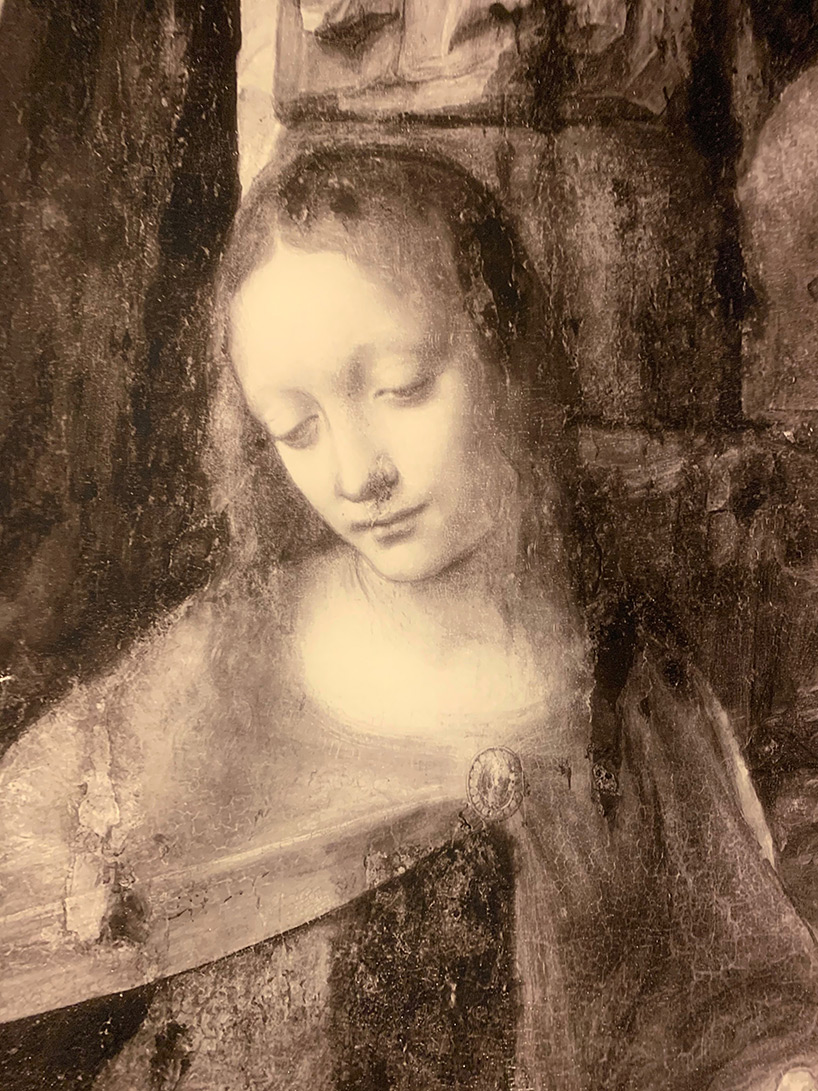
full size reflectogram: detail of virgin of the rocks
a number of full-sized infrared reflectograms of leonardo’s paintings are presented in the exhibition. this imaging technique is used to trace the carbon beneath the layers of paint and thus reveal the underdrawings made on the ground. leonardo often changed his mind during the creative process; these images allow us to see his initial drafts and how he perfected his compositions. they also provide insight into the first steps he took in rendering skin tones, using his expertise to create careful transitions between light and shade.
furthermore, the exhibition aims to shed light on leonardo’s biography through the exhaustive reexamination of historical documentation, providing access to his artistic universe and relationship to painting. the essence of the artist’s approach to painting has been to ‘reproduce the reality of life within an infinite space made up of light and shade’ the louvre unfolds. ‘he developed a uniquely free style of drawing and painting that enabled him to endow his figures with the nature of movement. he aimed to make painting a science encompassing the whole physical world, able to express the truth of appearances. leonardo ushered in a modernity that would surpass antiquity and pave the way for future forms of art.’
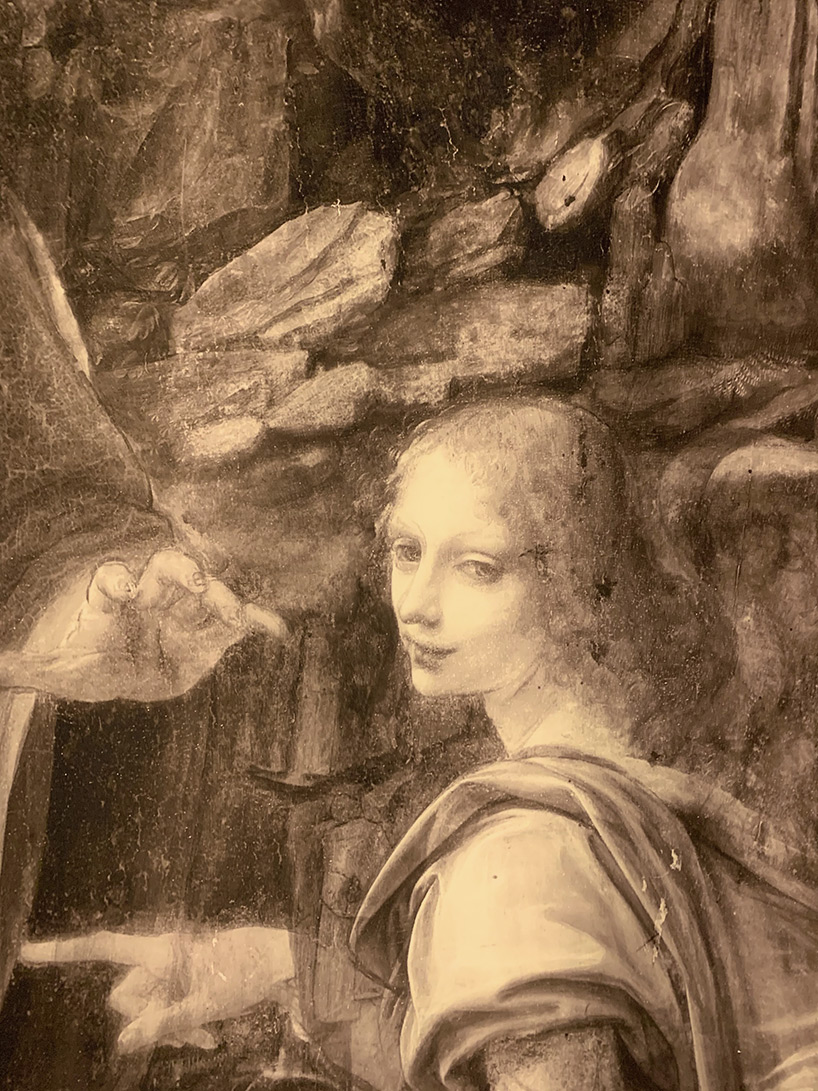
full size reflectogram: detail of virgin of the rocks
the exhibition also features a virtual reality experience (see designboom’s coverage here) developed in partnership with HTC vive, which allows visitors to get closer to the mona lisa than ever before. the virtual reality experience combines moving image, sound and interactive design to create a deeply engaging way to immerse visitors in the world of da vinci, and gain an understanding of what infrared scanning of the artwork can reveal about the sitter. transporting the viewer through time, the experience by HTC vive reveals insights into how the artwork was originally created and how it has changed over 500 years.
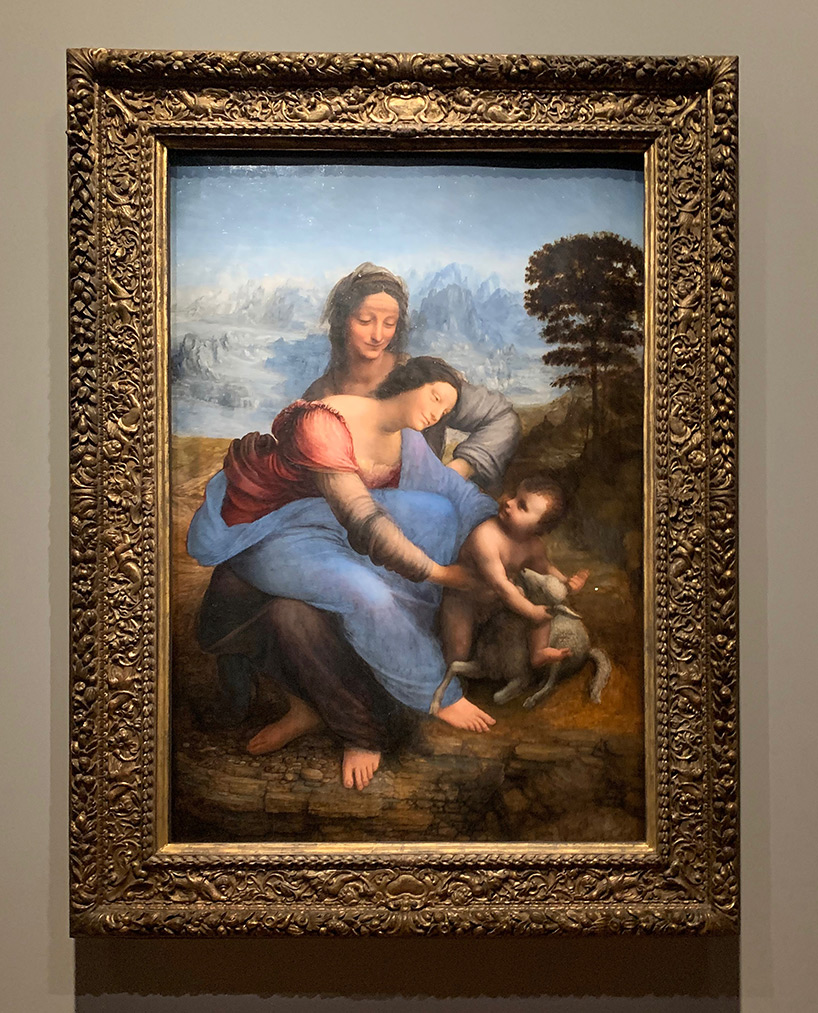
saint anne, the virgin and the child jesus playing with a lamb known as the saint anne
the layout of the exhibition unfolds across the following themes: light, shade, relief; freedom; science; and life.
light, shade, relief
in 1464, the young leonardo began an apprenticeship in florence with andrea del verrocchio, an accomplished draughtsman and one of the greatest sculptors of the 15th century. while in verrocchio’s workshop, he studied the sculptural nature of form, movement (on which reality depends and all narratives are constructed) and chiaroscuro (the use of light and shade to create a sense of drama). his prime source of instruction was christ and saint thomas, a monumental bronze sculpture cast by verrocchio for the florentine church of orsanmichele. in this work, verrocchi – who was also a painter – demonstrated a profoundly pictorial conception of sculpture, from which leonardo drew the basis of his own art: the idea that space and form come into being through light, and exist only in the play of light and shadow. leonardo’s monochromatic drapery studies, painted on linen after clay figures covered with pieces of cloth dipped in clay, resemble verrocchio’s studies for the figures of christ and saint thomas and were inspired by this innovative perception of space.
the annunciation, the madonna of the carnation and the portrait of ginevra de’ benci reflect leonardo’s transition from sculpture to painting. this shift was boosted by his interest in the work of his contemporaries at a rival florentine workshop run by the pollaiuolo brothers, and in the innovations brought to florence by flemish painters – three quarter view portraits and the use of oil.
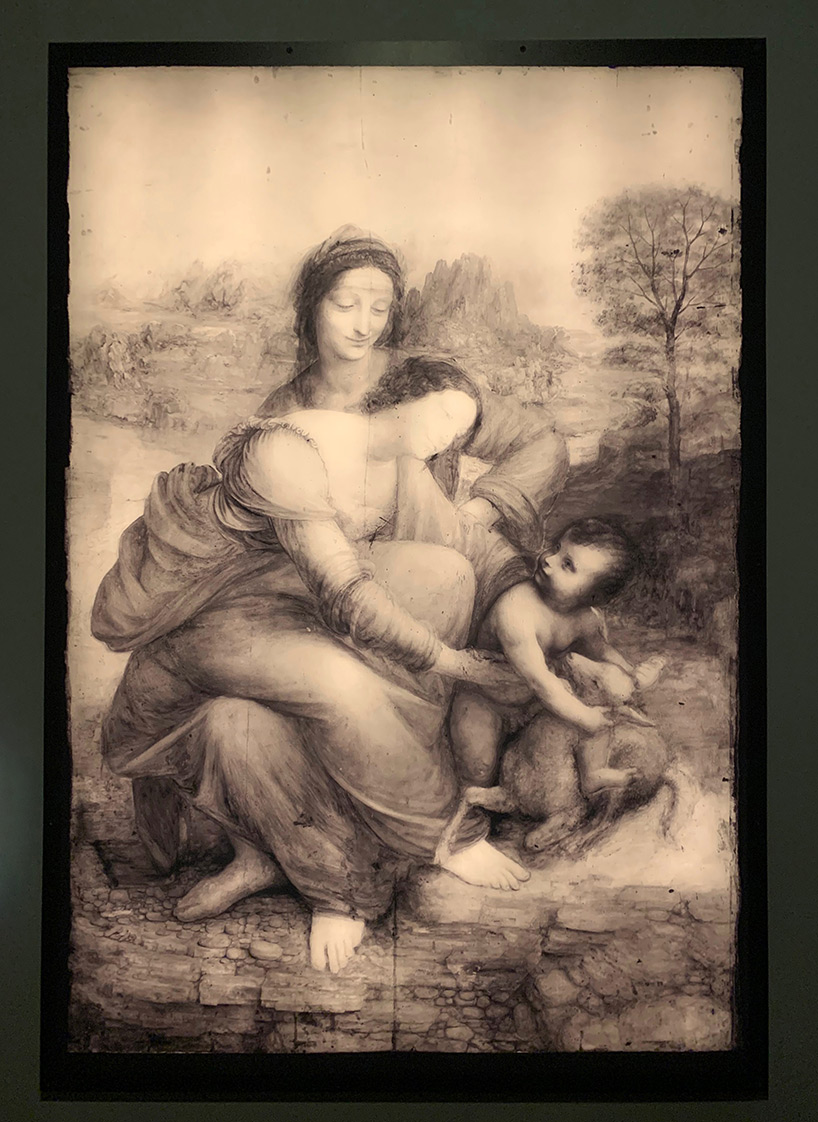
full size reflectogram: saint anne, the virgin and the child jesus playing with a lamb known as the saint anne
freedom
around 1478, building on what he had learned from verrocchio, leonardo began to explore new paths. to grasp the truth of form – which is illusory, being constantly broken apart by an ever-changing world – the painter needed to acquire an intellectual and technical freedom that would enable him to capture its very imperfection. in his drawing, this was expressed as a violent attack on form – a direct juxtaposition of incompatible states that sometimes produced nothing but black. this approach, required by the absolute necessity of conveying movement, was described by leonardo as componimento inculto – ‘intuitive composition’. the madonna of the cat and the madonna with a fruit bowl are the first remarkable illustrations of this new compositional style.
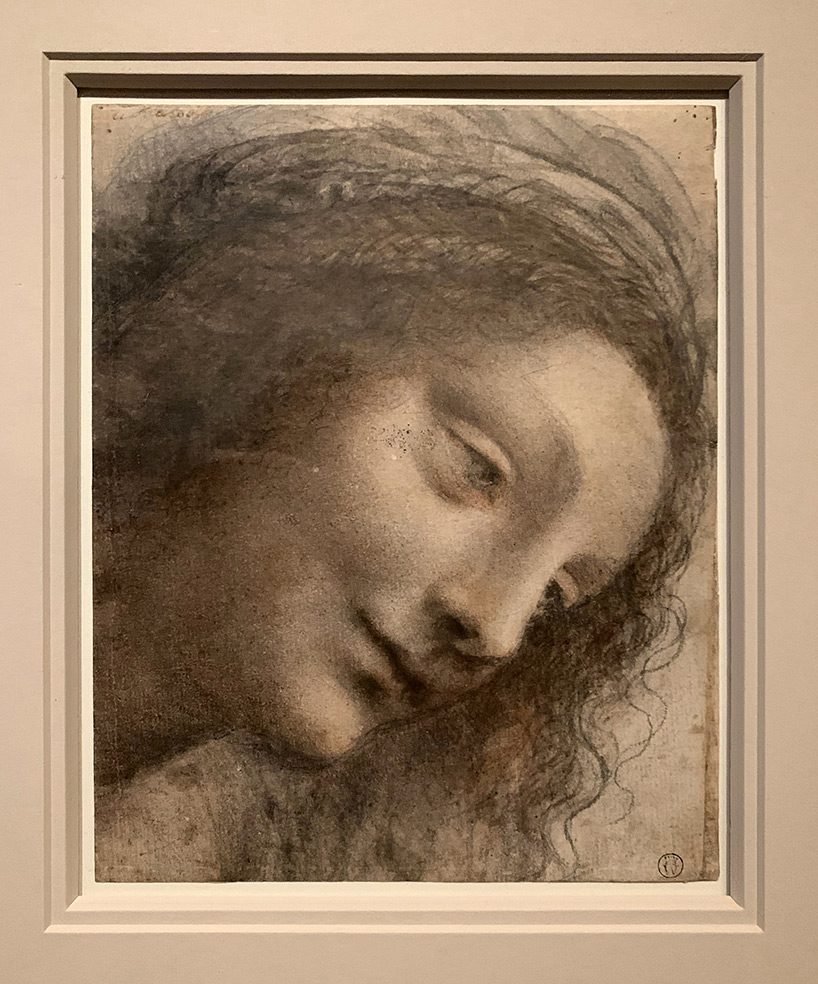
study of the saint anne, the face of the virgin
freedom (continued)
leonardo’s art was transfigured by the freedom he found in componimento inculto. the reflectogram of the adoration of the magi shows a tumultuous charcoal and brush drawing with dynamic lines, chaotic washes, constant reworking and superimposition of ideas – pentimenti that plunge the protagonists into a turbulent, murky darkness. this creative freedom fostered a tendency to incompletion which would become a characteristic of leonardo’s painting, exemplified by the poignant figure of saint jerome. this creative period continued in milan, where leonardo moved to in 1482 and where he painted the virgin of the rocks, the portrait of a musician and la belle ferronnière.
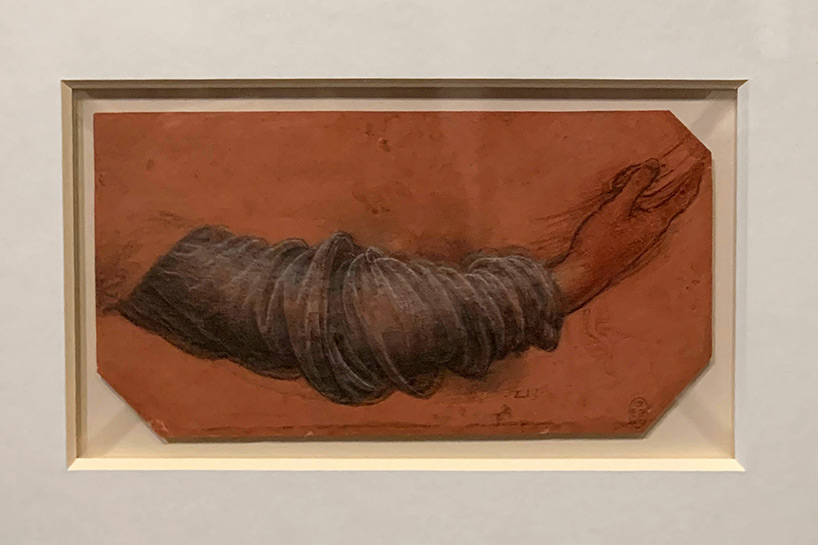
study of the saint anne, the arm of the virgin
science
for a person with extraordinary analytical vision, drawing is more than the mere reproduction of forms; it is also an expression of relationships between forms or, to put it differently, an act of thinking. in leonardo’s case, this intelligence was self-aware. moreover, it was accompanied by a constant questioning of the world – an insatiable need to understand, which became a desire to demonstrate, then a systematic investigation of every aspect of the physical world. the result was a vast compilation of notes, studies, experiments, reflections and theories in which writing and drawing were inextricably linked; this body of work, though often wandering and imperfect, nonetheless represents one of the most fascinating chapters in the history of natural philosophy.
the comprehensive nature of leonardo’s quest for knowledge stemmed from the fact that he was no longer content to study appearances; in order to convey their truth, he needed an understanding of phenomena from the inside – an awareness of the laws that govern them which, like pythagoras and plato before him, he regarded as fundamentally mathematical in nature.
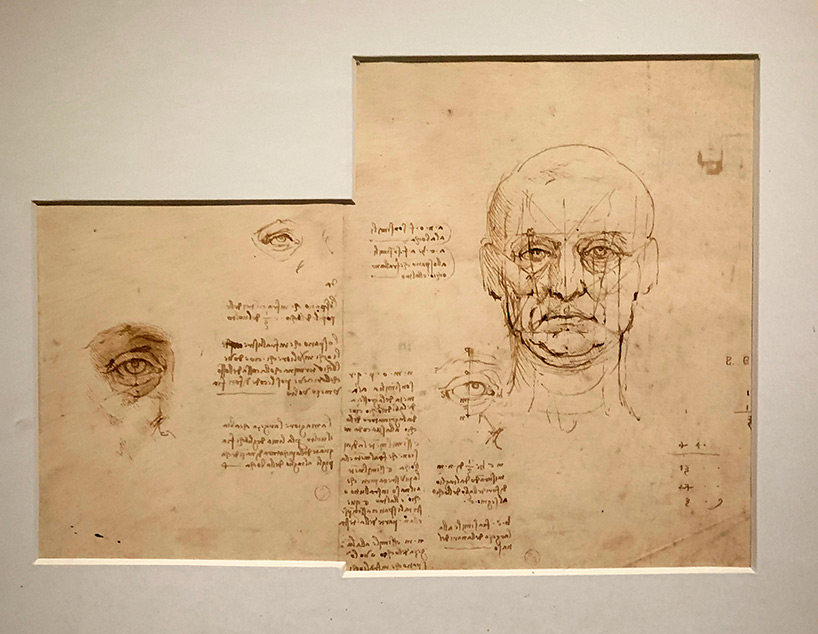
study of human body proportions
life
leonardo’s rigorous scientific approach encompassed every field of knowledge, engendering an endless, multifaceted labyrinth in which the painter seems to have ultimately lost his way. this disappearance is illusory, however, as it was science itself that gave the artist the freedom to master shade, light, space and movement. in his painting, the turbulence of componimento inculto gave way to the merging of forms and the eradication of boundaries, made possible by the revolutionary medium of oil. the freedom acquired through knowledge of the natural sciences elevated painting to the status of a divine science able to recreate the world and, most importantly, convey movement – the essence of life and the defining characteristic of every living creature.
it was during these years of scientific inquiry that leonardo painted the last supper, saint anne, the mona lisa, the battle of anghiari, salvator mundi and saint john the baptist. this period saw the dawn of the modern style, when the grandeur of renaissance art was seen, by contemporaries, as having surpassed the nobility of antiquity.
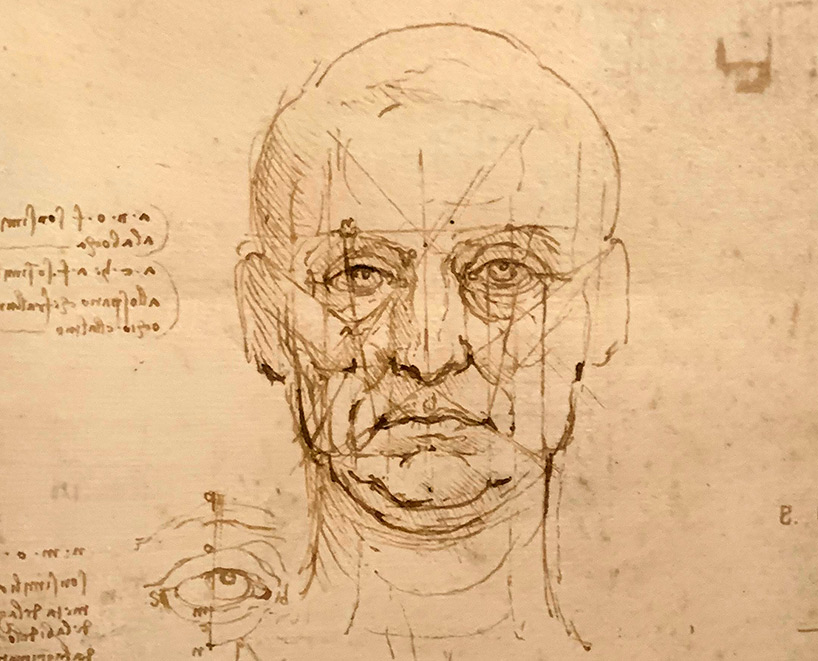
study of human body proportions
also coinciding with the exhibition, musée du louvre and off-white c/o virgil abloh announce the release of a capsule of clothing to celebrate the life and legendary works of the renaissance artist. printed on t-shirts and hoodies, the graphic illustrations intertwine da vinci’s paintings with off-white’s trademark logos, such as the diamond arrows and captions. among the featured works are da vinci’s virgin and child with saint john the baptist and an angel, known as the virgin of the rocks, and saint anne, the virgin mary, and the infant jesus playing with a lamb, known as saint anne, woven with the master’s iconic drawings.
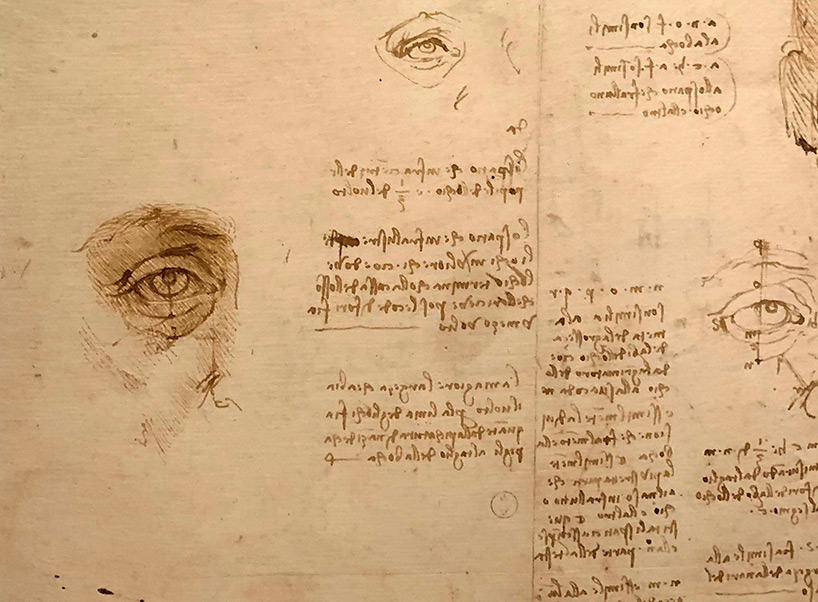
study of human body proportions
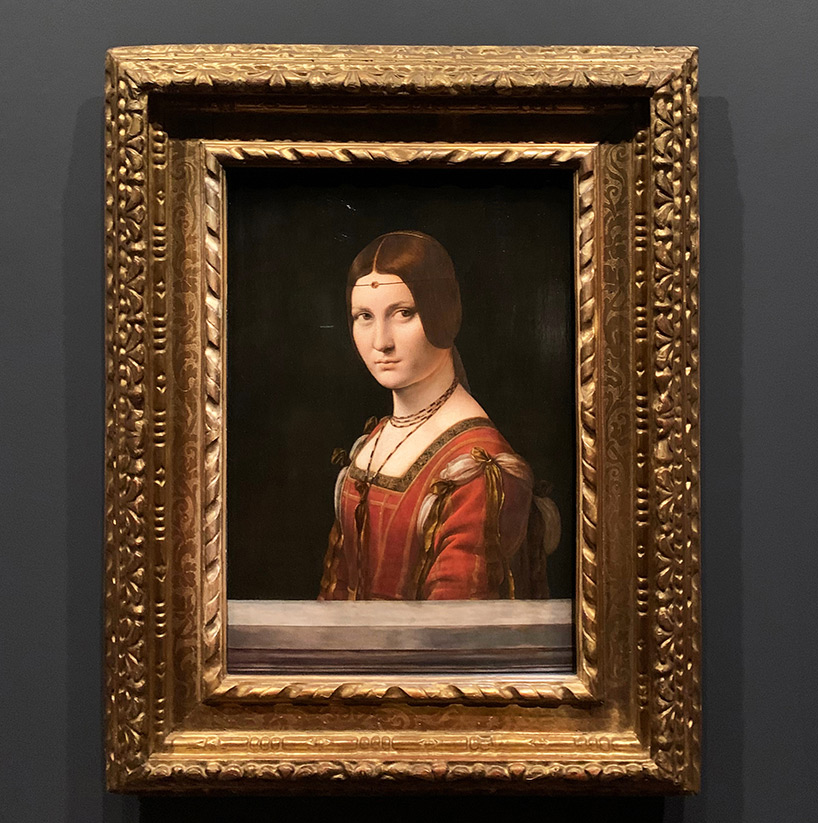
portrait of a lady from the court of milan, known as la belle ferronnière
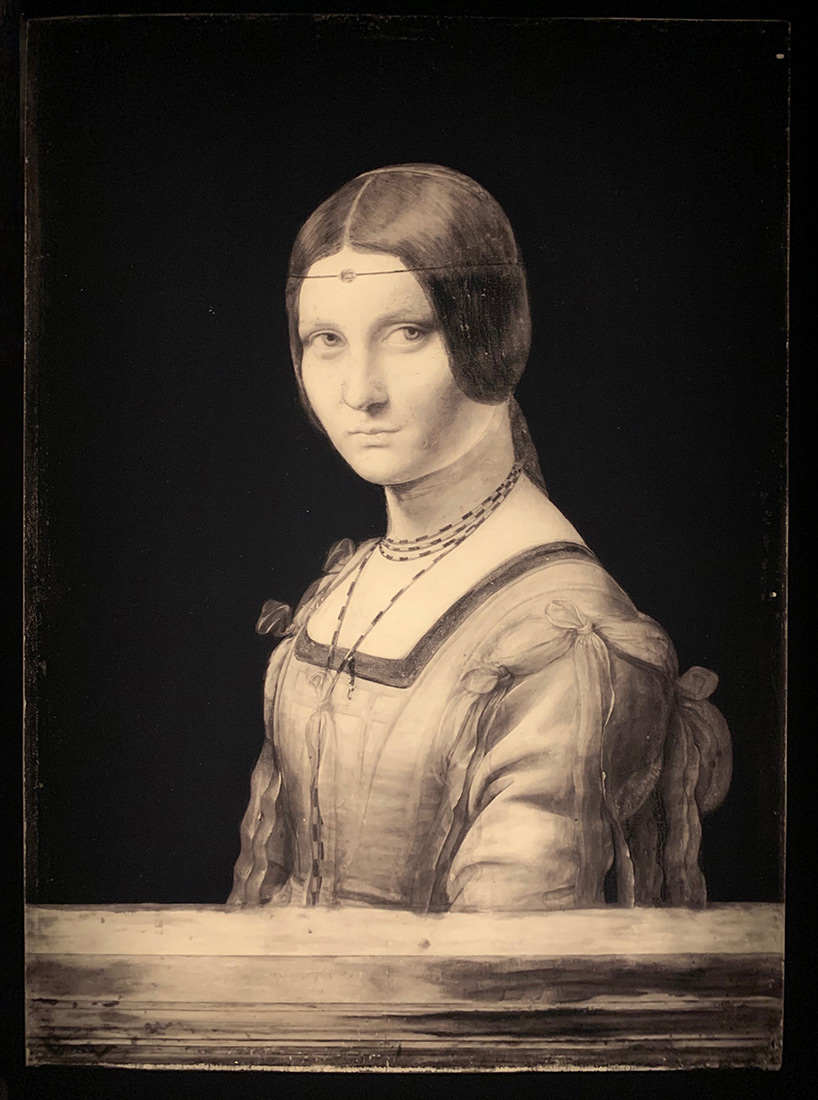
full size reflectogram: portrait of a lady from the court of milan, known as la belle ferronnière
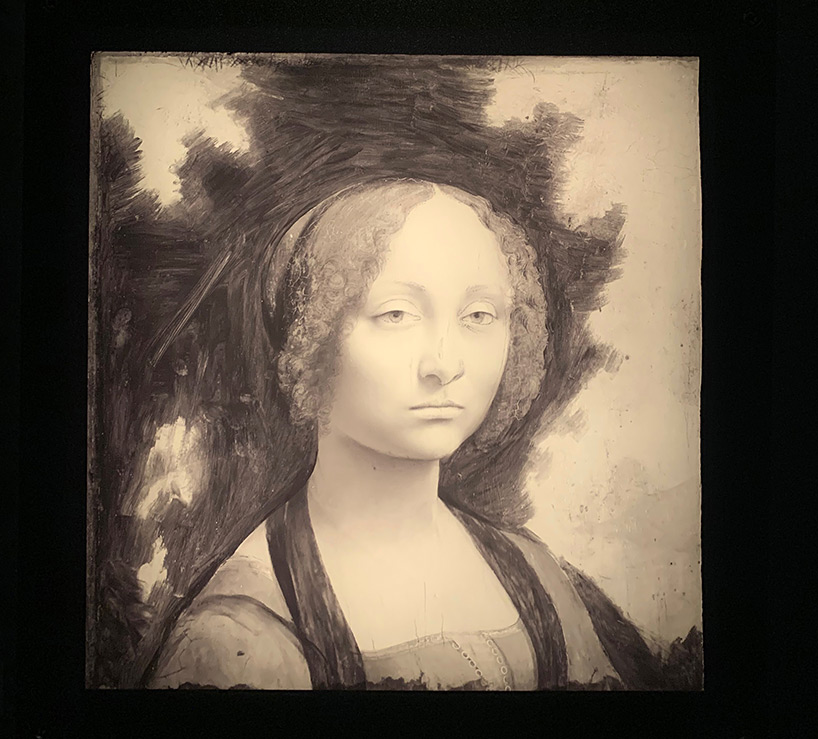
full size reflectogram: portrait of ginevra benci
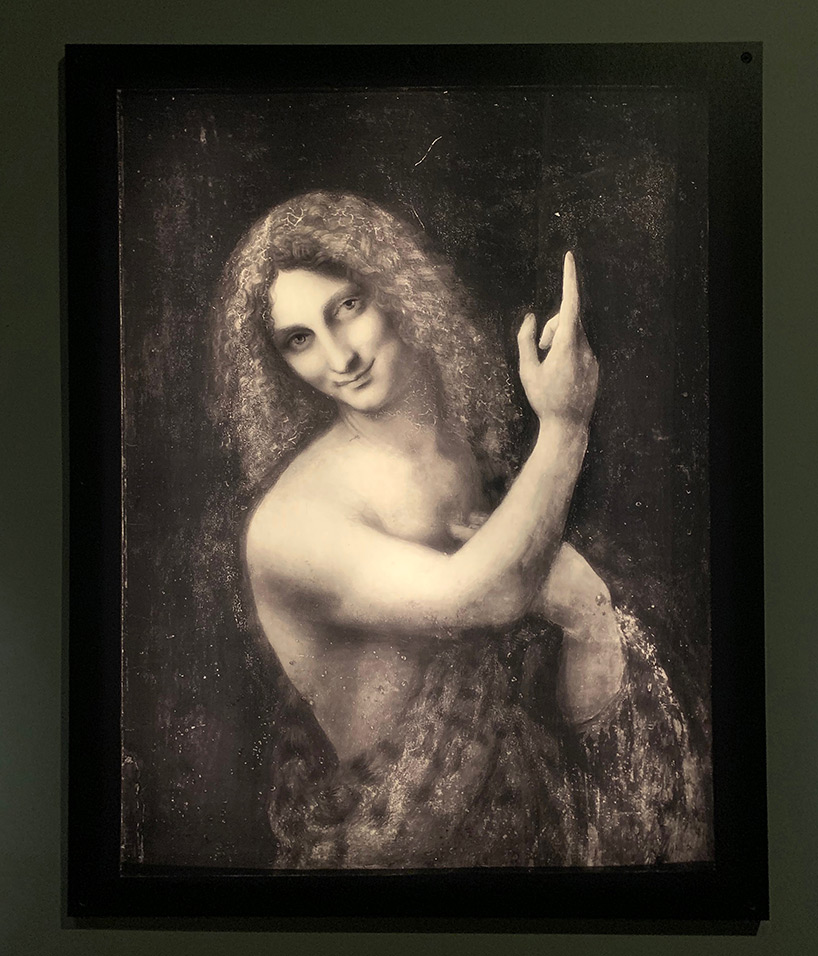
full size reflectogram: saint john the baptist
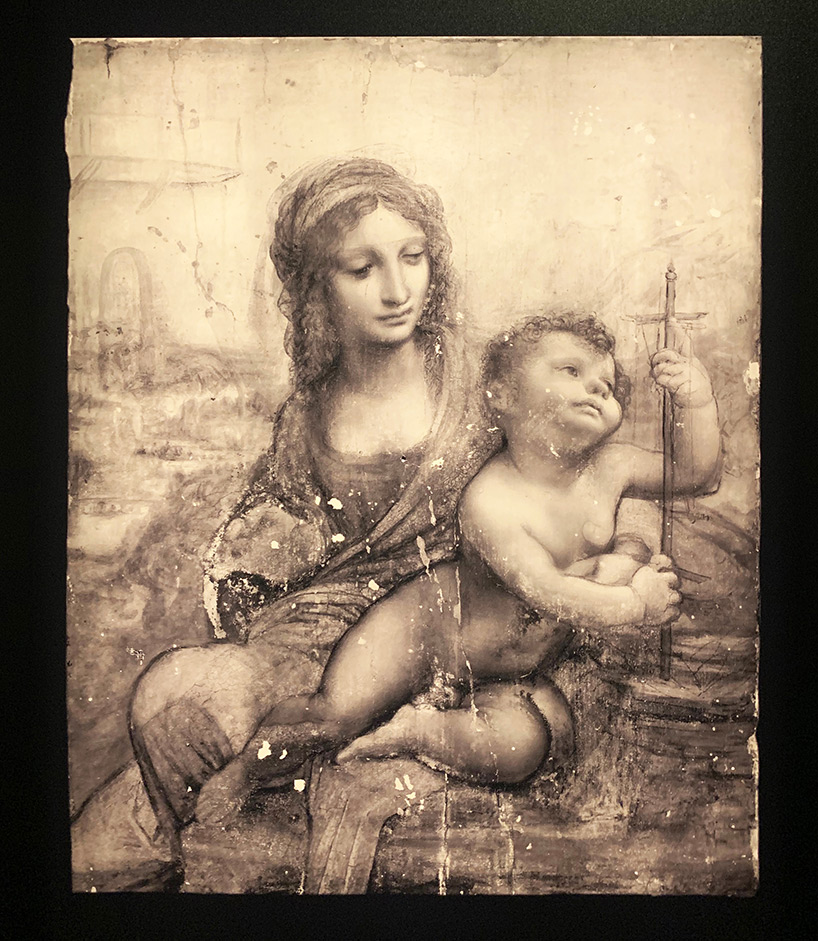
full size reflectogram: the virgin with the child known as madonna of the yarnwinder
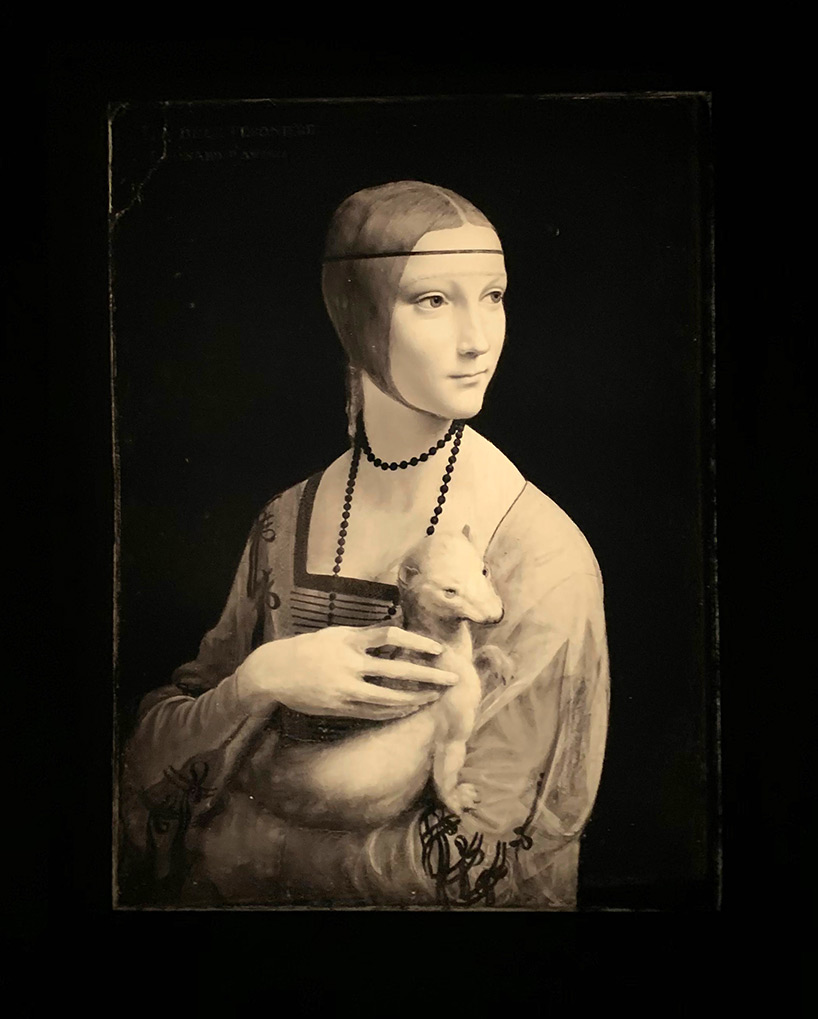
full size reflectogram: portrait of cecilia gallerani, known as the lady with an ermine
project info:
exhibition: leonardo da vinci
exhibition booklet: download here
exhibition curators: vincent delieuvin, department of paintings, and louis frank, department of prints and drawings, musée du louvre
duration: october 24, 2019 – february 24, 2020
location: musée du louvre, hall napoléon, under the pyramid
